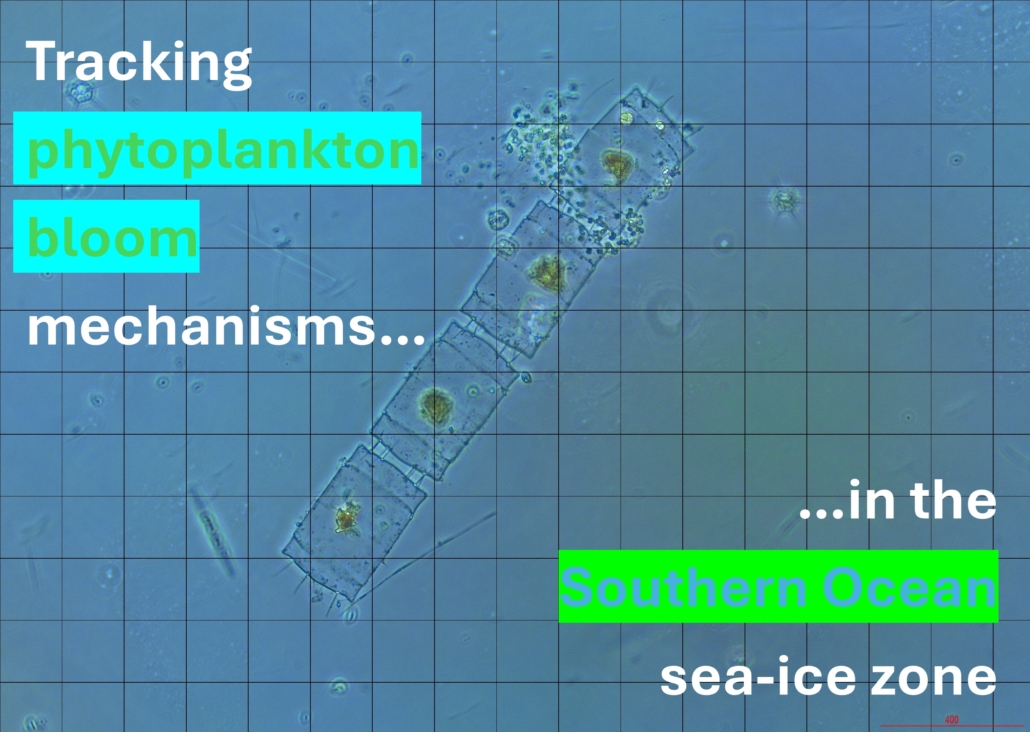Scientists from the iC3 Polar Research Hub have gathered new data that can help resolve the long-standing mystery of how sea ice drives phytoplankton blooms in the Southern Ocean, a crucial global ‘carbon pump’.

Photo: Megan Lenss / Norwegian Polar Institute
Phytoplankton blooms play a key role in the earth’s climate system, as they absorb a large quantity of carbon dioxide from the atmosphere.
– This study fills important and timely gaps on primary production in a notoriously understudied region of the Southern Ocean, said Megan Lenss from the Norwegian Polar Institute, lead author of the study.
Generally, blooms occur when sea ice around Antarctica melts in the austral spring, providing light and nutrients for phytoplankton communities to grow. However, the precise drivers of these blooms remain poorly understood.
To crack this puzzle, the study team collected samples during a scientific cruise around Antarctica during the astral summer of 2021 to investigate the environmental conditions favoring the distribution and succession of phytoplankton communities during the sea-ice retreat.
They found that increased light and iron concentrations following sea-ice melt are the main environmental factors controlling phytoplankton blooms, while seeding by sea-ice algae may also significantly contribute.
Close to Antarctica, where the ocean is mostly covered by sea ice, phytoplankton bloom concentrations were lowest. Far from the continent, in the least ice-covered areas, phytoplankton bloom concentrations were highest.
Data analysis also revealed that the sources of iron differed between the zones closest to the continent and those furthest away.
In the former, iron was supplied by large amounts of water from precipitation and glacial ice melt, while in the latter it was supported by large amounts of sea-ice melt.
The observed succession of phytoplankton communities was consistent with previous studies on the subject. The early season blooms were dominated by flagellate species, while the later blooms were dominated by diatom species.
– Our findings will help the global scientific community to better predict the future evolution of phytoplankton communities and the carbon pump in the Southern Ocean, said iC3 team member Sebastien Moreau, also from the Norwegian Polar Institute, who co-authored the study.
Based in Tromsø in Arctic Norway, iC3 is an interdisciplinary hub that produces ground-breaking insights into how the links between ice sheets, carbon cycles and ocean ecosystems are impacting life on earth.
—
The study “Phytoplankton bloom distribution and succession driven by sea-ice melt in the Kong Håkon VII Hav” was co-authored by Megan Lenss and Sebastien Moreau and Tore Hattermann from the iC3 Polar Research Hub. It has been published open access in ELEMENTA.
iC3
- Centre for ice, Cryosphere, Carbon and Climate
- An interdisciplinary hub for collaboration, innovation and training the next generation of polar researchers
- Read more about iC3




